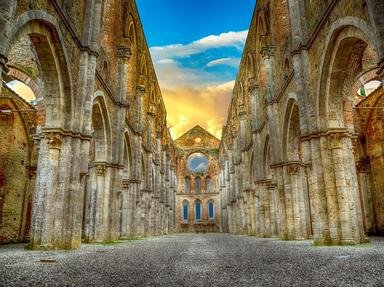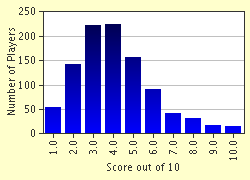Quiz Answer Key and Fun Facts
1. This Christian heresy, which stated that only the most saintly individuals could belong to the church, originated in North Africa in the fourth century A.D. By what name was this key heretical belief system known?
2. Negotiating twice with invading Central European tribes to spare Rome, it was under the influence of this 5th century pope that the concept of papal stewardship over all Europe came into being.
3. One of the most keen minds of the early medieval period, this Catholic saint was primarily responsible for translating the Bible into Latin, creating what we now call the Vulgate Bible. To whom am I referring?
4. An early encyclopedist of the Middle Ages, Martianus Capella's most famous work was called which of the following?
5. While the Greeks referred to the Germanic tribes as 'barbarians', and the Romans used the term 'Germani', by what general term did the Germans refer to themselves?
6. What was the name of the semi-mythical hero of the Salian Franks, whose name was applied to the dynasty including Clovis I, the first king of a united France?
7. Justinian is largely regarded as the most influential of all the medieval Byzantine emperors. What was the name of Justinian's wife, a former circus dancer and possibly a prostitute?
8. Benedict Biscop, a churchman of noble Anglo-Saxon blood, founded what great monastery of England in the 7th century?
9. It seems that every major figure of medieval Europe came equipped with a personal biographer whose sole purpose was to beautify the royal figure's name for posterity. Einhard played this role for what great figure of the Middle Ages?
10. Born in the year 1007, he went from being a poor orphan to one of the key figures in the Catholic Church. A promoter of rigorous Church reforms, he sometimes came into conflict with other great Church figures of his time, such as Hildebrand (later Gregory VII) and Humbert. Who was this prolific saint, whose works included a number of Epistles, Lives of Saints (including Odilo of Cluny, Rodulphus and Dominicus) and 'On Miracles and Apparitions', that died in 1072?
Source: Author
thejazzkickazz
This quiz was reviewed by FunTrivia editor
Beatka before going online.
Any errors found in FunTrivia content are routinely corrected through our feedback system.

